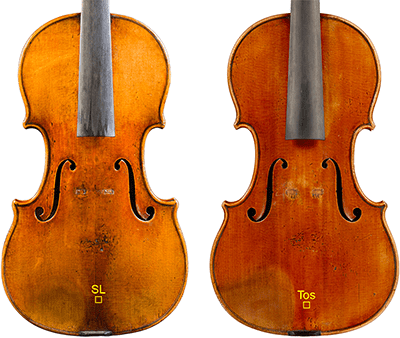
Violin craftsmanship reached its peak in the 18th century during what would come to be known as the Cremonese period, or the golden age of violin making. During this time, Italian families like Amati, Stradivari, and Guarneri were in high demand to deliver the finest violins, meant to be played in the most important concert halls of Europe. To this day, these instruments crafted more than 300 years ago represent the gold standard for violin making, the most famous and coveted being the Stradivarius violins. Their price tag hovering in the $10 million range is an indicator of how much musicians and the art world at large prize them.
But what makes these instruments sound so heavenly and why haven’t other violin makers been able to replicate the manufacturing process? In a new study, researchers in Italy looked for chemical clues in the finishing of these masterpieces, which is believed to play a key role in their aesthetic sound. The analysis revealed a previously unknown protein-based layer between the wood and the varnish.
The chemistry of the sound of perfection

Researchers led by Lisa Vaccari and Marco Malagodi were fortunate enough to gain access to two Stradivarius violins, the San Lorenzo 1718 and the Toscano 1690. They peered inside the precious instruments under synchrotron radiation Fourier-transform infrared spectromicroscopy, a non-invasive technique that allowed the researchers to identify an intermediary layer between the varnish and the adjacent wood without ever laying a finger on the samples themselves.
However, while this technique told the scientists something was there, it didn’t reveal any information about what it was made of. To answer this important question, the researchers turned to infrared scattering-type scanning near-field microscopy (IR s-SNOM), which involves highly sensitive microscopes that take many snapshots of just tens of nanometers across and measure the infrared light scattered by the material. Since this infrared signal is contingent on the underlying chemical makeup of the material, the analysis could reveal the exact nature of the intermediate layer: protein-based compounds distributed in nano-sized patches.
The findings reported in the journal Analytical Chemistry are a great step up in scientists’ quest to demystify Antonio Stradivari’s secret manufacturing process. However, there doesn’t seem to be one single feature that is responsible for the signature sound of these violations, rather every bit of craftsmanship acts in synergy to produce an effect that is greater than the sum of its parts.
In 2015, MIT engineers and violinmakers at the North Bennet Street School in Boston built digital models of hundreds of Cremonese-era violins and used them to make an evolutionary model, in which craftsmanship error represented ‘mutations’. Through a lot of trial and error, Cremonese masters exploited ‘happy accidents’ and found that an elongated “f” shape for the opening of the resonance chamber and a specific thickness of the back of the violin produced the most pleasant overall sound.
Geometry, however, is only part of the puzzle. Scientists at the National Taiwan University analyzed the chemistry of the wood of several Stradivarius violins, finding that the aged and treated maple wood had very different properties from that used to make modern instruments. And even earlier, in 2006, biochemists at Texas A&M University discovered the chemicals inside the varnish of Stradivarius violins: salts of copper, iron, and chromium. These chemicals are known to be excellent wood preservers but may also alter the acoustic properties of the instrument.
Of the more than 1,200 instruments built by Stradivari over his 60-year career, about 500 are still in circulation today. This makes them more like old Italian paintings that are cherished for their historical and cultural value. The fact that they are still played in concert halls across the world after all these years is mind boggling but also makes it all the more compelling for scientists to replicate their original craftsmanship.









